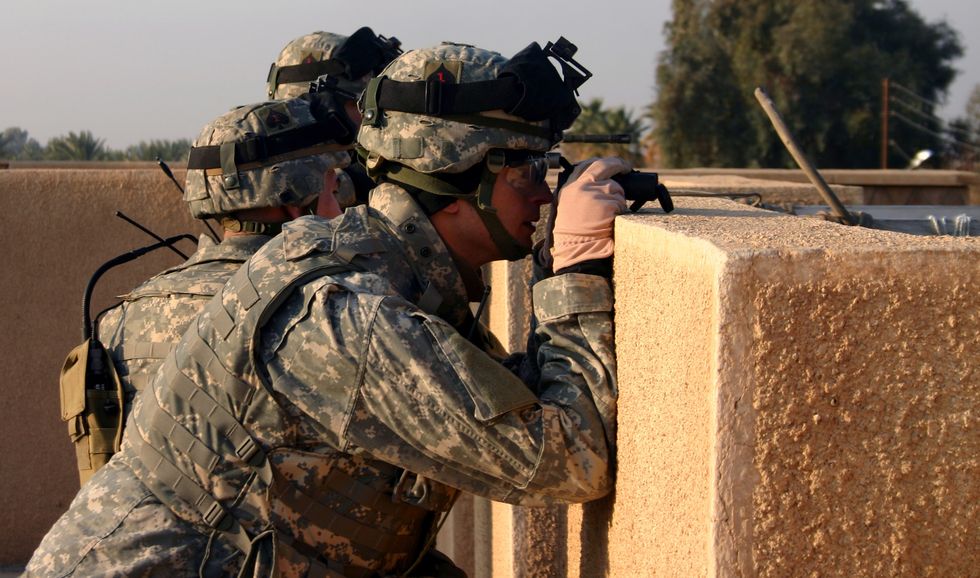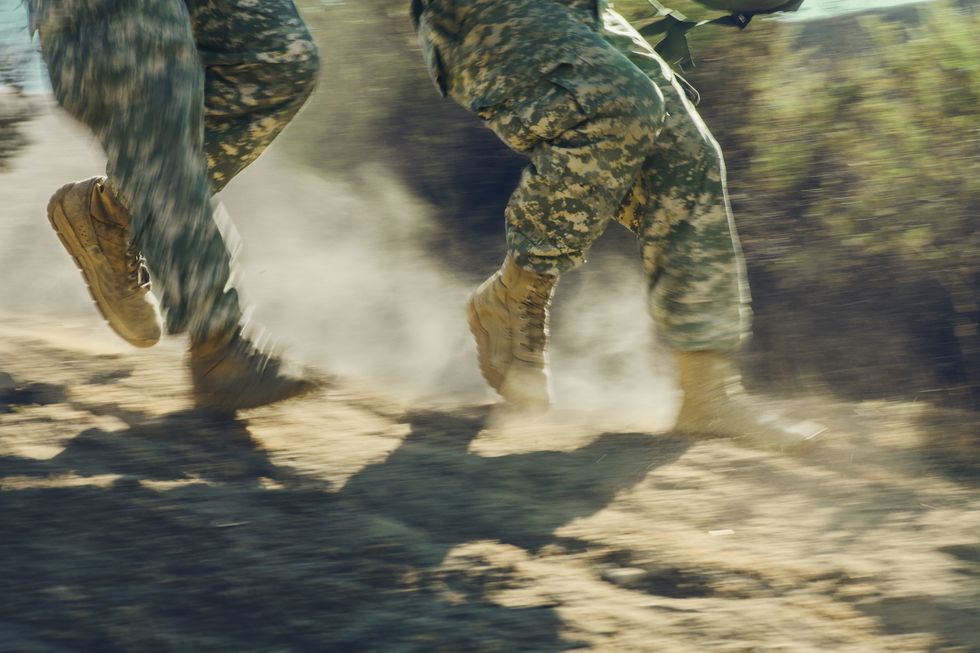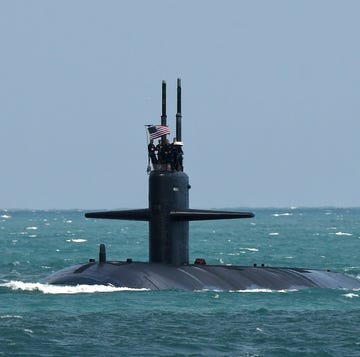The ambush is one of the longest-standing fighting tactics of all time, using the element of surprise to overpower the enemy. This style of attack is said to date back millions of years, with anthropologists suggesting early humans used the tactic to hunt large game. From cavemen using this type of strategy to hunt down woolly mammoths all the way to Army Rangers flushing out enemies, the ambush has proved to be a devastating call in the soldier’s playbook.
An ambush is one of the most terrifying situations that a soldier can experience on the battlefield. However, while the casualty rate in these situations is often very high, it’s important to note that there are a number of ways to avoid being ambushed and for those on the wrong side to fight back. That’s why we wanted to pull back the curtain on how a modern ambush works, how the armed forces plan and execute an ambush, and how troops can defend themselves from an incoming ambush situation.
What Is an Ambush?
An ambush is defined as a surprise attack from a concealed position on a moving or temporarily halted target, according to the U.S. Military Infantry Doctrine, a basic handbook that outlines military strategy.
“The ambush is something that is predetermined,” Sgt. 1st Class Christian Emig tells Popular Mechanics. “We know what is going to go down or have intel on people who are moving through the area that we would like to have a decisive victory over.”
While the idea of an ambush is to use the element of surprise to overpower the enemy, it doesn’t always happen that way. This is why there are two types of ambushes: a hasty and a deliberate.
- Hasty: When a patrol unit comes across an enemy without being detected and has a moment to put together an ambush. “You don’t have a lot of time to plan or sit in … it’s usually something that is trained, so individuals know what they’re doing,” says Emig.
- Deliberate: A meticulously planned attack at a predetermined location against an enemy force that meets the commander’s engagement criteria. “It’s something that is set in motion well before the enemy is supposed to move,” says Emig.
The concept of an ambush might sound elementary, but it didn’t take us long to learn that surviving and engaging in an ambush is much more three-dimensional than we originally thought. The ambush is one of the first strategic maneuvers that soldiers learn during basic training. This instruction is also ongoing and improved upon throughout a soldier’s time within the military. According to Emig, soldiers learn the fundamentals in basic training and proceed to hone these skills further down their career in Ranger School—a 62-day small-unit tactics and leadership course.
Ambush Categories
- Point: An attack on one singular kill zone.
- Area: An attack where one unit is deployed to two or more related point ambushes.
Ambush Formations
- Linear: The attackers position themselves parallel to the enemy’s route—this ambush is often deployed in open terrain to keep the enemy in the kill zone.
- L-shaped: The attackers position themselves in an L-shape with an assault group parallel to the enemy’s direction of travel and a support group that forms a pinch point—this ambush is especially useful at a sharp bend in a trail or road.
Planning
Every deliberate ambush is purposefully planned to unleash the greatest amount of firepower against the enemy. This whole process starts with what’s called terrain analysis, wherein leaders identify the best area for the attack to take place; this involves not only finding the ambush site itself, but also the kill zone, security positions, and rally points. See below for a quick primer on these critical positions that can make or break a deadly ambush attack. (All of these definitions can also be found in the U.S. Military Infantry Doctrine.)
Go Time
With the planning stage complete, it’s imperative that everyone knows the plan, their assigned role, and where they’re going before entering the ambush site. “Their assignments during the ambush is first and foremost reconfirming the rules of engagement and communication,” says Emig. He mentions that it’s so loud that hand and arm signals are often the best form of communication as the ambush is taking place. However, it’s not uncommon to see flares and whistles used to signify when to lift and shift fire—among other things.
Emig also says that movement is an integral component in executing an effective ambush. “Those lift and shift fires need to be appropriate, and those handing off signals (verbal or physical) need to be communicated effectively with security elements,” says Emig. This is especially important as certain ambush layouts—think L-shaped—can involve friendlies in front of you and on either side of you, sending rounds down range.
Defense
The best defense mechanism for staying out of an ambush is to stop your team from walking into one in the first place. Situational awareness is the best countermeasure to avoid enemy attacks; this involves everything from avoiding main roads, not taking the same route twice, traveling in larger groups, and even using reconnaissance to pick the best route. Emig also noted that traveling at night brings a whole new challenge as you don’t want to have headlights cutting through the darkness—the light pollution could give away your position.
Options become much more limited if you find your team on the wrong side of an ambush.
“The best way to get out of it is to step on the gas and return fire as much as possible to keep their heads down for the couple of seconds you need to get out of the kill zone,” says Emig. It was undoubtedly bone-chilling to hear that if your team ever walks into an ambush, the best way out is to fight back.
“Sometimes that’s all you can do … get off the kill zone or get off the beaten path as fast as possible,” says Emig.
Takeaways
After learning about the ambush, it was certainly interesting to hear that it’s one of the more basic strategies in the military playbook. “If we’re using a hasty occupation, we can set that up in less than five minutes with three people,” says Emig.
However, regardless of whether there are three people unleashing a hasty ambush or 30 conducting a deliberate ambush, both are capable of eliminating enemies that walk into the kill zone. The longstanding existence of the ambush attack shows that the element of surprise remains one of the most effective on the battlefield.
Matt Crisara is a native Austinite who has an unbridled passion for cars and motorsports, both foreign and domestic. He was previously a contributing writer for Motor1 following internships at Circuit Of The Americas F1 Track and Speed City, an Austin radio broadcaster focused on the world of motor racing. He earned a bachelor’s degree from the University of Arizona School of Journalism, where he raced mountain bikes with the University Club Team. When he isn’t working, he enjoys sim-racing, FPV drones, and the great outdoors.















